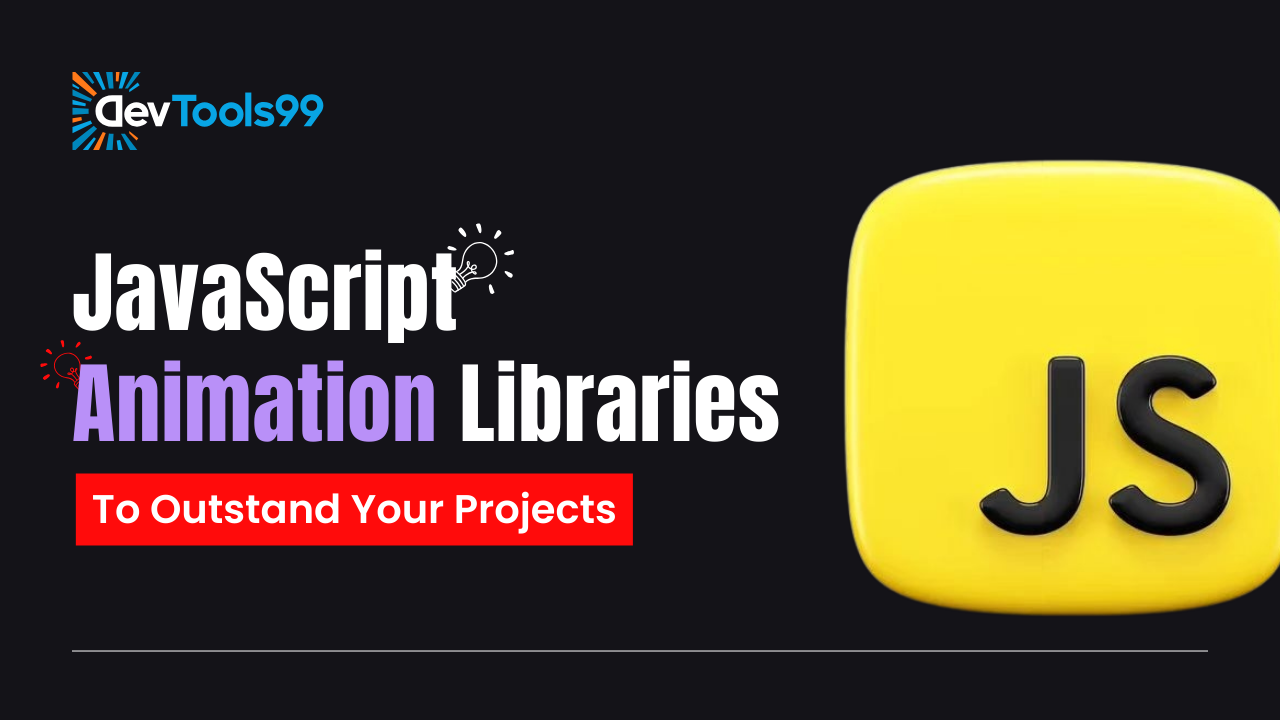
Top JavaScript Animation Libraries for Developers
Animations can dramatically enhance user experiences by adding visual appeal and guiding user interaction. JavaScript animation libraries simplify the process of creating complex, smooth, and high-performance animations. In this blog post, we'll explore some of the best JavaScript animation libraries available for developers.
1. GSAP (GreenSock Animation Platform)
GSAP is an industry-standard animation library that excels in performance and flexibility. It’s often chosen for complex animations because of its powerful features and ability to run seamlessly across all browsers. With GSAP, developers can create anything from basic transitions to intricate animation sequences.
Key Features:
- High-performance animations with minimal overhead.
- Supports animations for CSS, SVG, and JavaScript objects.
- Cross-browser compatibility ensures reliability.
- Plugins available for advanced effects like scrolling, morphing, and more.
GSAP is widely used by professional developers due to its robustness and reliability, making it a top choice for web projects that require polished and sophisticated animations.
2. Anime.js
If you’re looking for a lightweight yet powerful animation library, Anime.js is a great option. It is perfect for handling CSS properties, SVGs, DOM attributes, and JavaScript objects. Its intuitive API makes it easy to create fluid and natural animations with minimal setup.
Key Features:
- Simple syntax for rapid development.
- Highly customizable animations with timelines and keyframes.
- Supports a wide range of properties including CSS, SVG, and JavaScript objects.
- Built-in easing functions for smoother animations.
Anime.js strikes a balance between simplicity and power, making it ideal for designers and developers aiming to create engaging, responsive animations with minimal code.
3. Velocity.js
Velocity.js is designed with speed and performance in mind, making it an excellent choice for smooth animations across all devices. It combines the simplicity of jQuery’s animation methods with the performance benefits of CSS transitions.
Key Features:
- Fast and efficient animations optimized for mobile devices.
- Easy syntax, similar to jQuery animations.
- Works well with both CSS and JavaScript-driven animations.
- Highly performant, even with a large number of animated elements.
Velocity.js is a good fit for developers focused on performance and efficiency, especially when creating animations for mobile or resource-constrained environments.
4. Three.js
Three.js is the go-to JavaScript library for creating 3D animations in the browser. It enables developers to work with 3D objects, textures, and scenes, giving them the ability to build immersive, interactive experiences directly within the web browser.
Key Features:
- Supports WebGL for rendering complex 3D graphics.
- Rich set of tools for working with 3D objects, lights, and textures.
- Highly flexible, with the ability to create games, simulations, and interactive models.
- Large community and extensive documentation.
Three.js is perfect for developers looking to build visually stunning 3D animations and interactive applications. Its versatility and depth make it a powerful tool for anyone working with 3D graphics on the web.
5. Lottie
Lottie allows you to bring complex animations, exported from Adobe After Effects, into your web projects with ease. It uses JSON files to render animations as vector graphics, ensuring they remain high-quality without burdening performance.
Key Features:
- Renders animations as vectors, ensuring high visual quality.
- Lightweight and efficient for both web and mobile applications.
- Works with animations created in Adobe After Effects.
- Simple integration with any web or mobile app.
Lottie is a fantastic choice for developers who want to add sophisticated motion graphics to their projects, especially when working with animation designers using After Effects.
6. Popmotion
Popmotion is a versatile animation library that gives developers low-level control over animations. It’s suitable for a wide range of projects, from basic transitions to highly complex interactions, making it a flexible option for developers who need more granular control over their animations.
Key Features:
- Supports physics-based animations for realistic effects.
- Can animate both CSS properties and JavaScript objects.
- Highly customizable with modular building blocks.
- Works in any JavaScript environment, including React and Vue.
Popmotion’s flexibility and control make it a strong choice for developers who want complete oversight of their animation logic, whether working with CSS or JavaScript.
7. Mo.js
Mo.js is a motion graphics library designed to simplify the creation of animations. It’s known for its ease of use and ability to produce striking, professional-grade animations. Built-in easing functions and timeline controls help streamline the process.
Key Features:
- Simple, yet powerful API for creating complex motion graphics.
- Supports timeline controls for better animation sequencing.
- Built-in easing functions for smooth, natural transitions.
- Highly customizable for both beginners and professionals.
Mo.js is ideal for developers who want to create eye-catching animations quickly and easily. Despite its simplicity, it offers enough power to deliver professional-level results.
Conclusion
Choosing the right animation library depends on your specific project requirements, whether it’s 2D, 3D, or vector-based animations. Libraries like GSAP, Anime.js, and Velocity.js are excellent for high-performance, customizable animations, while tools like Lottie and Three.js allow for more specialized use cases. Whether you’re working on simple transitions or complex motion graphics, these libraries can help bring your web applications to life.
Follow Us:
Stay updated with our latest tips and tutorials by subscribing to our YouTube Channel.
